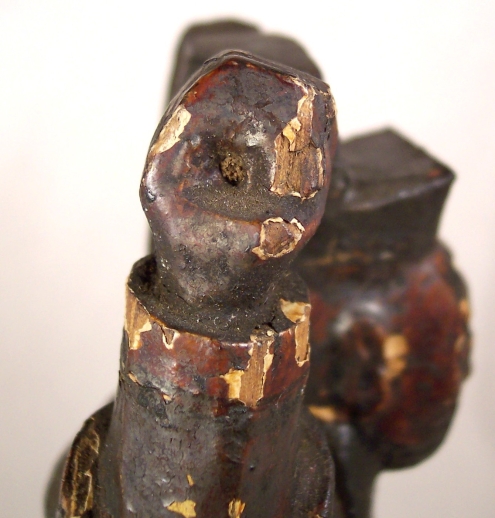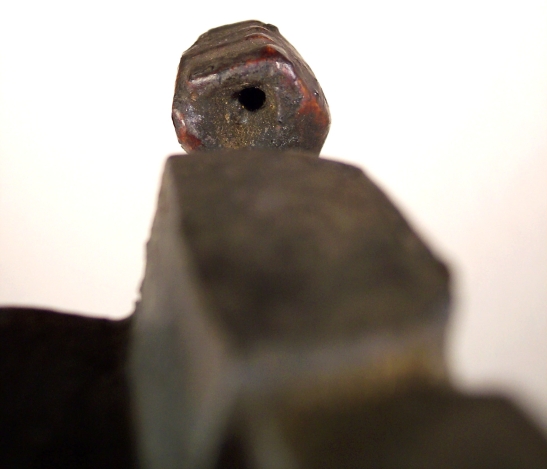
|
Subject:Re: Chinese Lokapala
Posted By: Mike Thu, May 21, 2015
Nicolas, Thanks for your post! I've been doing some more research online, and I think I've identified the deity. I believe it is the Chinese God of Wealth, Tsai Shen Yeh (or just Tsai Shen). He is often depicted wearing a black beard, riding or standing on a tiger, holding a whip or sword in one hand, and holding a gold ingot in the other. Looking more closely at my statue, it does appear the raised hand once held something. I can clearly see a hole on the inside of his hand, and there is a remnant of a handle of some sort which can be seen on the outside of the hand.
I'm glad you mentioned the Ming hat, as this corroborates Pierre's date of late Ming to early Qing.
I've added a link to a very similar (but much more detailed) Tsai Shen statue.


|
 Chinese Lokapala ( China & Japan ) - Mike - May 16, 2015 (04:02 PM)
Chinese Lokapala ( China & Japan ) - Mike - May 16, 2015 (04:02 PM)  Re: Chinese Lokapala - pierrevdw - May 18, 2015 (01:13 AM)
Re: Chinese Lokapala - pierrevdw - May 18, 2015 (01:13 AM)  Re: Chinese Lokapala - Mike - May 18, 2015 (07:48 AM)
Re: Chinese Lokapala - Mike - May 18, 2015 (07:48 AM)  Re: Chinese Lokapala - Nicolas_Vietnam - May 19, 2015 (08:56 PM)
Re: Chinese Lokapala - Nicolas_Vietnam - May 19, 2015 (08:56 PM)  Re: Chinese Lokapala
Re: Chinese Lokapala  - Mike - May 21, 2015 (09:00 AM)
- Mike - May 21, 2015 (09:00 AM)  Re: Chinese Lokapala - pierrevdw - May 23, 2015 (02:44 AM)
Re: Chinese Lokapala - pierrevdw - May 23, 2015 (02:44 AM) 











